When to apply sunscreen before or after moisturizer? This fundamental skincare question has a nuanced answer that depends on your specific sunscreen type and skincare goals. The general rule is that chemical sunscreens should be applied BEFORE moisturizer to ensure proper absorption, while mineral/physical sunscreens should be applied AFTER moisturizer as your final protective step. Understanding this critical distinction can mean the difference between optimal UV protection and compromised skincare results, making proper application timing essential for maintaining healthy, protected skin throughout your daily routine.ipsy+2
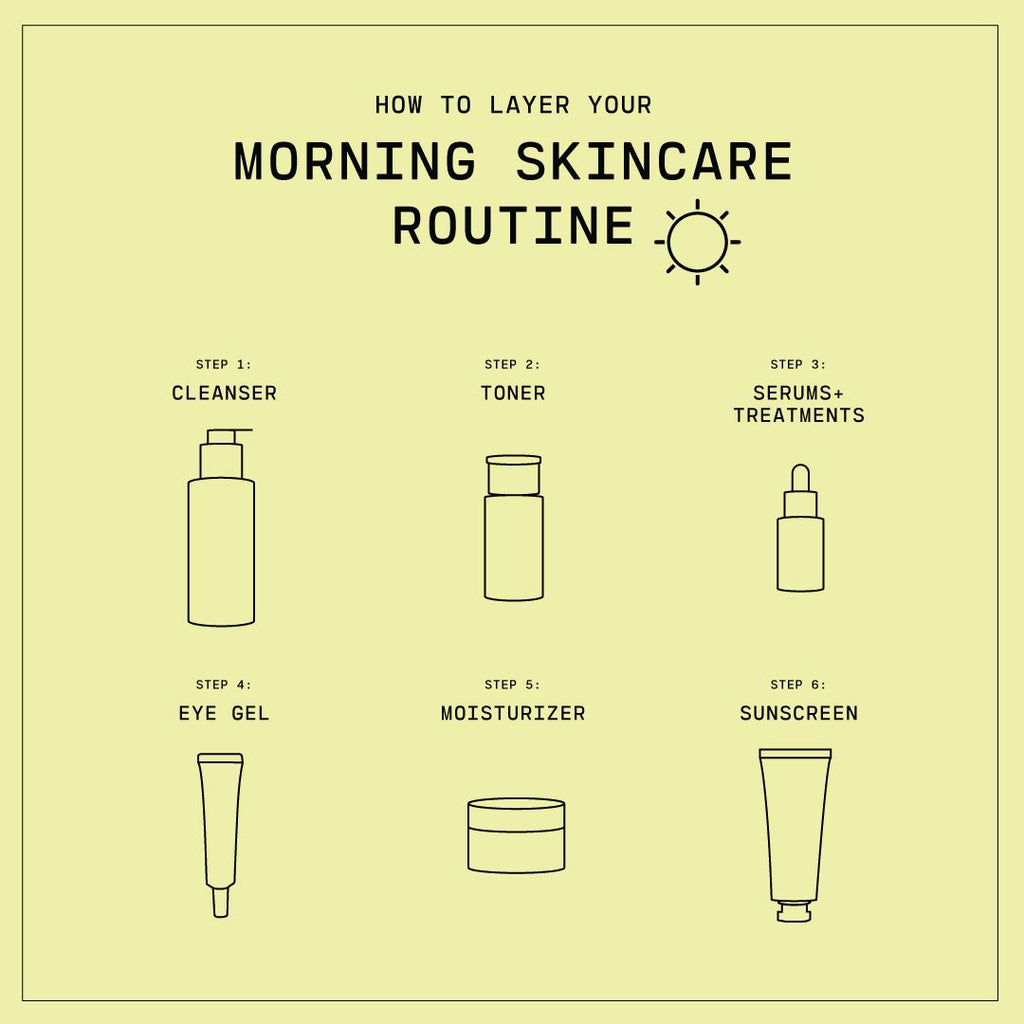
Step-by-step layering for a morning skincare routine ending with sunscreen as the final step versedskin
Understanding Sunscreen and when to apply sunscreen before or after moisturizerTypes: The Foundation of Proper Application
Chemical Sunscreens vs. Mineral Sunscreens: How They Work
Chemical sunscreens and mineral sunscreens function through completely different mechanisms, which directly impacts when they should be applied in your routine. Chemical sunscreens contain active ingredients like avobenzone, oxybenzone, octinoxate, and homosalate that work by absorbing into the skin where they convert harmful UV rays into harmless heat through chemical reactions. This absorption process requires direct contact with your skin, making it essential to apply chemical sunscreens before moisturizer.ipsy+2
Mineral sunscreens, also called physical sunscreens, contain zinc oxide and titanium dioxide as active ingredients that create a physical barrier on your skin’s surface. These ingredients work by reflecting and scattering UV rays away from your skin rather than absorbing them. Since mineral sunscreens function as a protective shield, they must be applied after moisturizer as the final step in your skincare routine to maintain their barrier effectiveness.sarahcrealbeauty+3
The Science Behind Proper Layering
Skincare product absorption follows the “thinnest to thickest” principle, where lighter formulations should be applied before heavier ones to ensure optimal penetration and effectiveness. Chemical sunscreens typically have lighter, more fluid consistencies that need to penetrate the skin barrier, while mineral sunscreens often have thicker formulations designed to sit on the skin’s surface.skincare+3
Disrupting this natural layering order can compromise both products’ effectiveness. When you apply moisturizer over chemical sunscreen, it can prevent the sunscreen from fully absorbing into your skin, reducing its protective capabilities. Conversely, applying mineral sunscreen before moisturizer can cause the moisturizer to break up the protective film that mineral sunscreens create.ipsy+2
Step-by-Step Application Guide: Chemical Sunscreens
Morning Routine with Chemical Sunscreen
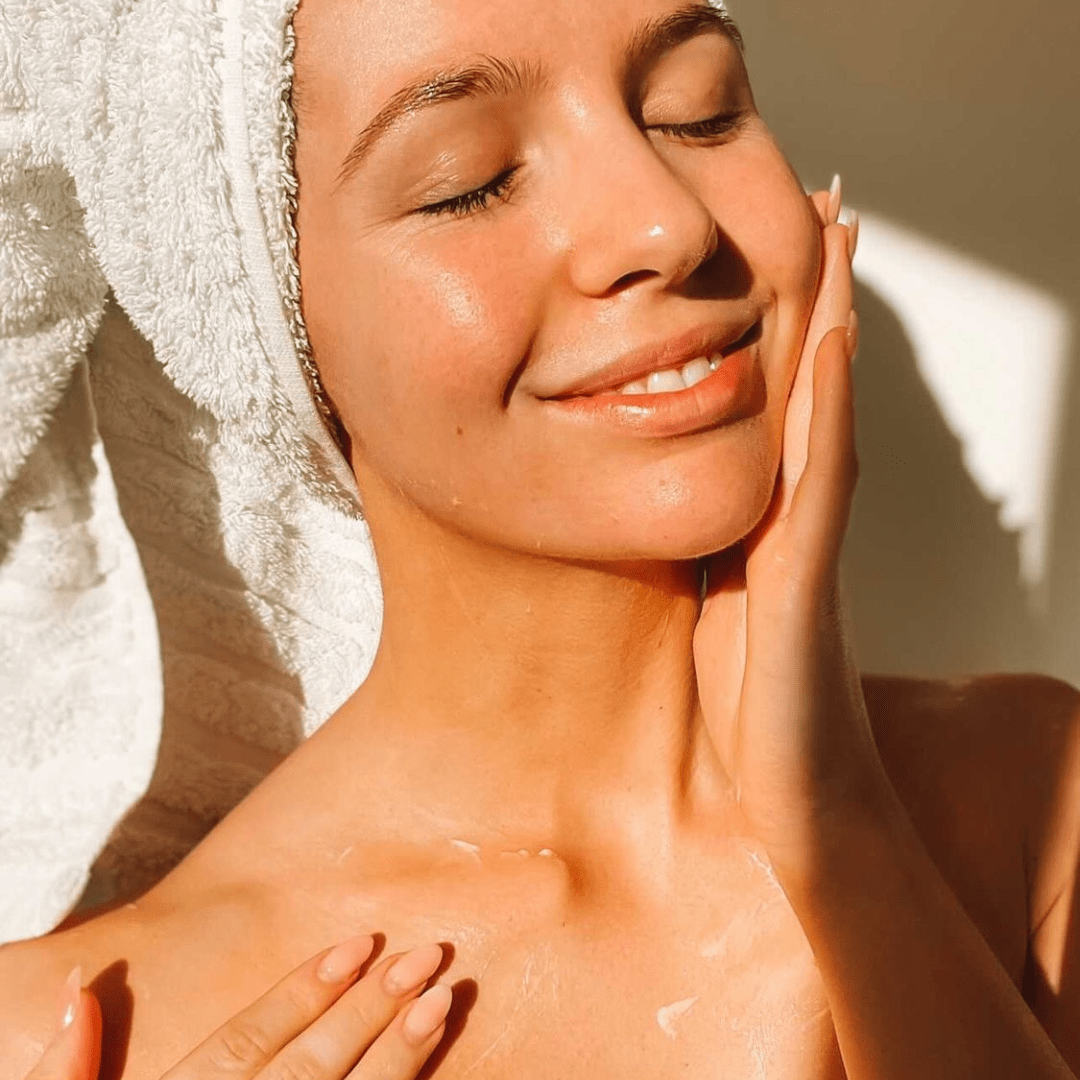
Person applying sunscreen on neck as part of a morning skincare routine rawkanvas
For chemical sunscreens, the optimal morning routine follows this specific sequence to ensure maximum protection and skincare benefits:ipsy+1
Step 1: Gentle cleansing – Start with lukewarm water and a gentle facial cleanser to remove overnight oils, dead skin cells, and any residual skincare products. This creates a clean canvas for optimal product absorption.clarins+1
Step 2: Toner application (optional) – Apply an alcohol-free toner to balance your skin’s pH and prepare it for subsequent product absorption. Pat gently with cotton pads or clean hands.kabila+1
Step 3: Vitamin C serum – Apply your antioxidant serum to clean, dry skin. Vitamin C provides additional protection against free radical damage and works synergistically with sunscreen for enhanced protection.cerave+1
Step 4: Chemical sunscreen application – Apply your chemical sunscreen using the two-finger rule (squeeze product along your index and middle fingers from base to tip). Allow 15-30 minutes for the chemical sunscreen to fully absorb before proceeding to the next step.skincare+1
Step 5: Moisturizer application – Once your chemical sunscreen has absorbed, apply your daily moisturizer to lock in hydration and create a smooth base for makeup application.ipsy+1
Timing and Wait Periods for Chemical Sunscreens
Chemical sunscreens require specific timing considerations to ensure optimal protection and prevent product interference. Wait 2-3 minutes after applying chemical sunscreen before layering your moisturizer to allow the active ingredients to begin absorbing into your skin. This brief waiting period prevents the moisturizer from diluting or disrupting the sunscreen’s absorption process.skincare+2
After completing your entire routine, wait an additional 15-30 minutes before sun exposure to ensure your chemical sunscreen has fully activated and can provide its rated SPF protection. This activation time is crucial for chemical sunscreens to reach their full protective potential.sarahcrealbeauty+1
Step-by-Step Application Guide: Mineral Sunscreens
Morning Routine with Mineral Sunscreen
Mineral sunscreens follow the traditional skincare layering approach, where sunscreen serves as the final protective step. This sequence ensures that your mineral sunscreen can create an uninterrupted protective barrier:sarahcrealbeauty+2
Steps 1-3 remain the same: cleansing, toning (optional), and vitamin C serum application, allowing adequate time for each product to absorb.dermalogica+1
Step 4: Moisturizer application – Apply your daily moisturizer and allow 2-4 minutes for complete absorption before proceeding to sunscreen application. This timing prevents the sunscreen from mixing with your moisturizer, which could compromise its protective effectiveness.laroche-posay+1
Step 5: Mineral sunscreen application – As your final skincare step, apply mineral sunscreen using the two-finger rule. Mineral sunscreens provide immediate protection since they work by reflecting UV rays rather than requiring absorption time.ipsy+1
Step 6: Makeup application – If you wear makeup, wait 15-20 minutes after mineral sunscreen application to allow it to set properly before applying foundation or other cosmetic products.elosklinik+1
Benefits of the Mineral Sunscreen Approach
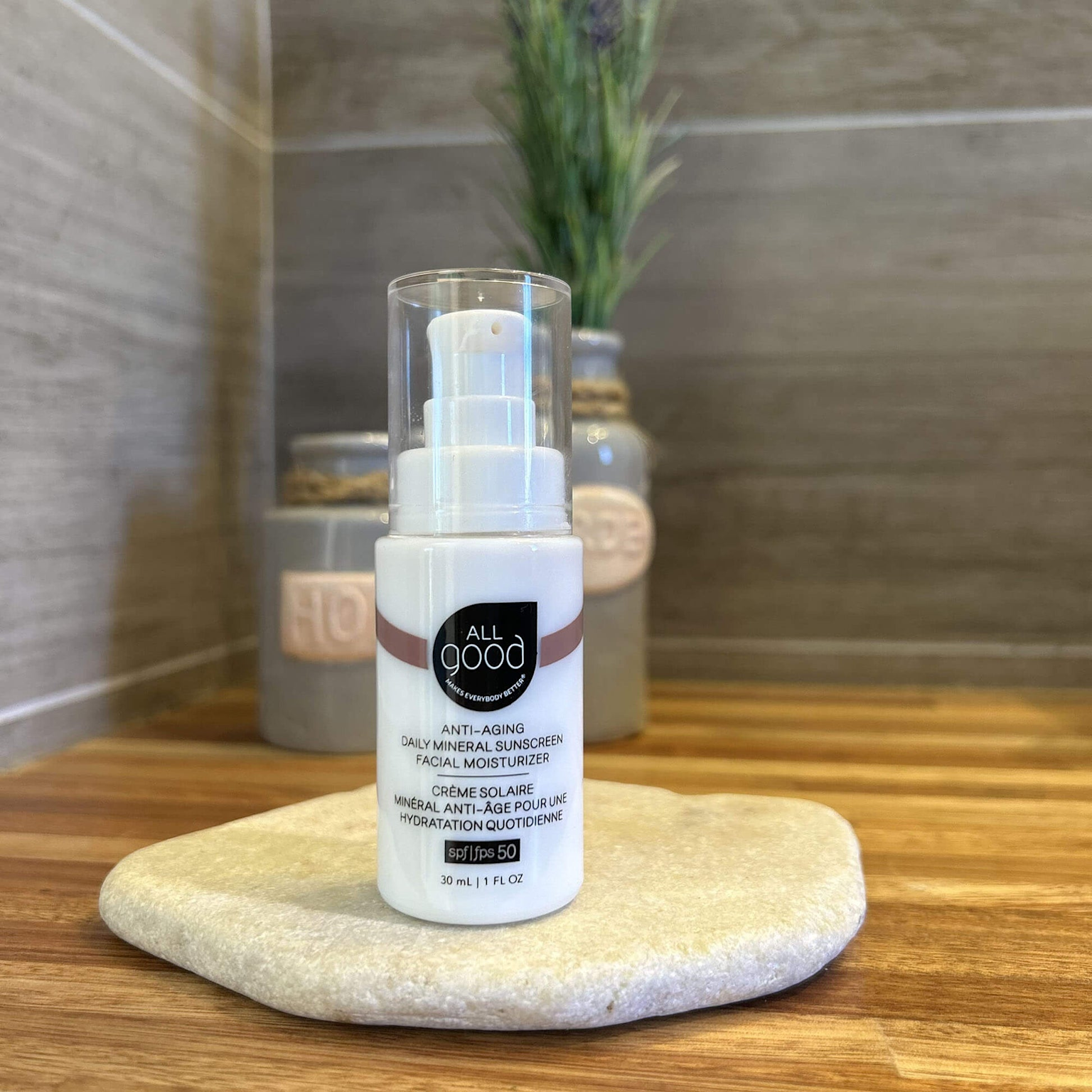
A bottle of All Good anti-aging daily mineral sunscreen and facial moisturizer with SPF 50 combines moisturizing and sun protection in one product allgoodbodycare
Mineral sunscreens offer several advantages that make them particularly suitable for sensitive skin types and those seeking immediate protection. They’re effective immediately upon application, eliminating the waiting period required by chemical sunscreens. This immediate effectiveness makes mineral sunscreens ideal for busy morning routines or unexpected sun exposure.ipsy+1
Mineral sunscreens are less likely to cause irritation compared to chemical formulations, making them the preferred choice for sensitive, reactive, or acne-prone skin types. The physical barrier they create also provides consistent protection that doesn’t degrade as quickly as chemical sunscreens when exposed to UV rays.sunbum+1
Morning Skincare Routine Order: Complete Guide

Morning skincare routine order showing when to apply sunscreen after moisturizer
Understanding the complete morning skincare sequence ensures that both your sunscreen and moisturizer can perform optimally within your broader skincare routine. The ideal morning routine progresses from thinnest to thickest products, with sunscreen placement determined by its specific type.lancome+1
Universal Morning Routine Steps
| Step | Product | Purpose | Application Tips | Key Ingredients to Look For |
|---|---|---|---|---|
| Step 1 | Gentle Cleanser | Remove overnight oils and impurities | Use lukewarm water, gentle circular motions | Gentle surfactants, ceramides |
| Step 2 | Toner (Optional) | Balance pH and prep skin | Pat with cotton pad or hands | Hyaluronic acid, niacinamide |
| Step 3 | Vitamin C Serum | Antioxidant protection from free radicals | Apply to dry skin, wait 10-15 minutes | L-ascorbic acid, magnesium ascorbyl phosphate |
| Step 4 | Eye Cream | Hydrate delicate eye area | Gently tap around orbital bone | Caffeine, peptides, hyaluronic acid |
| Step 5 | Moisturizer | Lock in hydration and nourish skin | Apply evenly, allow 2-4 minutes to absorb | Hyaluronic acid, ceramides, peptides |
| Step 6 | Sunscreen | Protect from UV damage and premature aging | Use 1/4 teaspoon for face, blend thoroughly | Zinc oxide, titanium dioxide, avobenzone |
| Step 7 | Makeup/Primer | Coverage and additional protection | Wait 15-20 minutes after sunscreen | SPF 15+, antioxidants |
This sequence applies to mineral sunscreens, which represent the most common application pattern. For chemical sunscreens, simply swap steps 5 and 6, applying the chemical sunscreen before moisturizer.ipsy+1
Ready to perfect your morning routine? Discover professional skincare guidance and premium products at Smile Pharmacy to ensure your skin receives optimal protection and care every day.
Hybrid Products and Alternative Solutions
Moisturizers with Built-in SPF
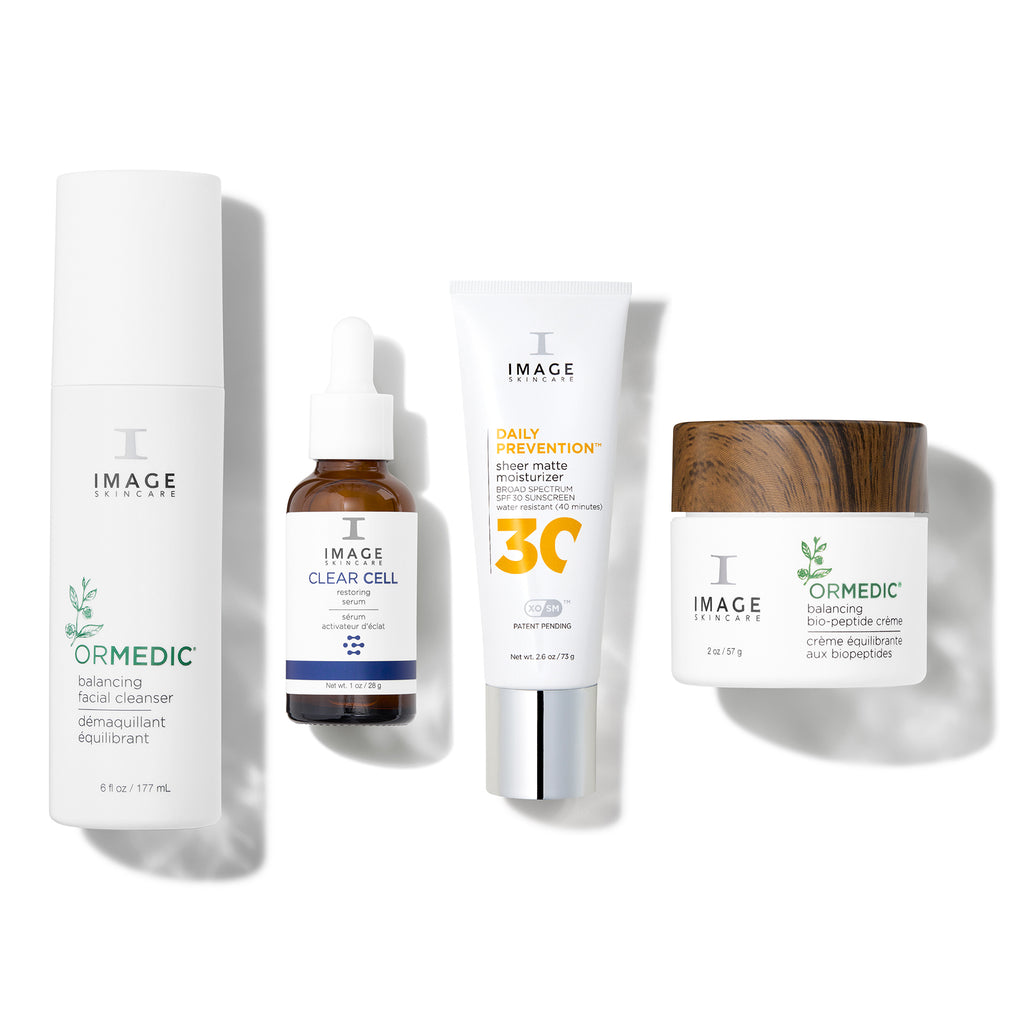
Image Skincare products including a cleanser, serum, SPF 30 moisturizer, and balancing cream illustrating skincare steps imageskincare
Moisturizers with built-in SPF offer convenience and time-saving benefits for those seeking to streamline their morning routines. These combination products typically contain SPF 30 or higher and can effectively replace both your moisturizer and sunscreen steps when used correctly. However, understanding their limitations and proper application remains crucial for optimal protection.dermstore+1
The effectiveness of combination SPF moisturizers depends on proper application quantity. Many users apply insufficient amounts of these products, which significantly reduces their SPF protection. To achieve the stated SPF rating, you must apply the same amount as you would a dedicated sunscreen – approximately 1/4 teaspoon (1.25ml) for face and neck coverage.skincare+1
Moisturizers with SPF work best for daily, moderate sun exposure but may not provide adequate protection for extended outdoor activities or intense UV environments. For beach days, hiking, or prolonged outdoor exposure, dedicated high-SPF sunscreen typically offers superior protection and longevity.dermstore
Tinted Sunscreens and BB Creams
Tinted sunscreens and BB creams bridge the gap between skincare and makeup, offering coverage, hydration, and UV protection in a single product.
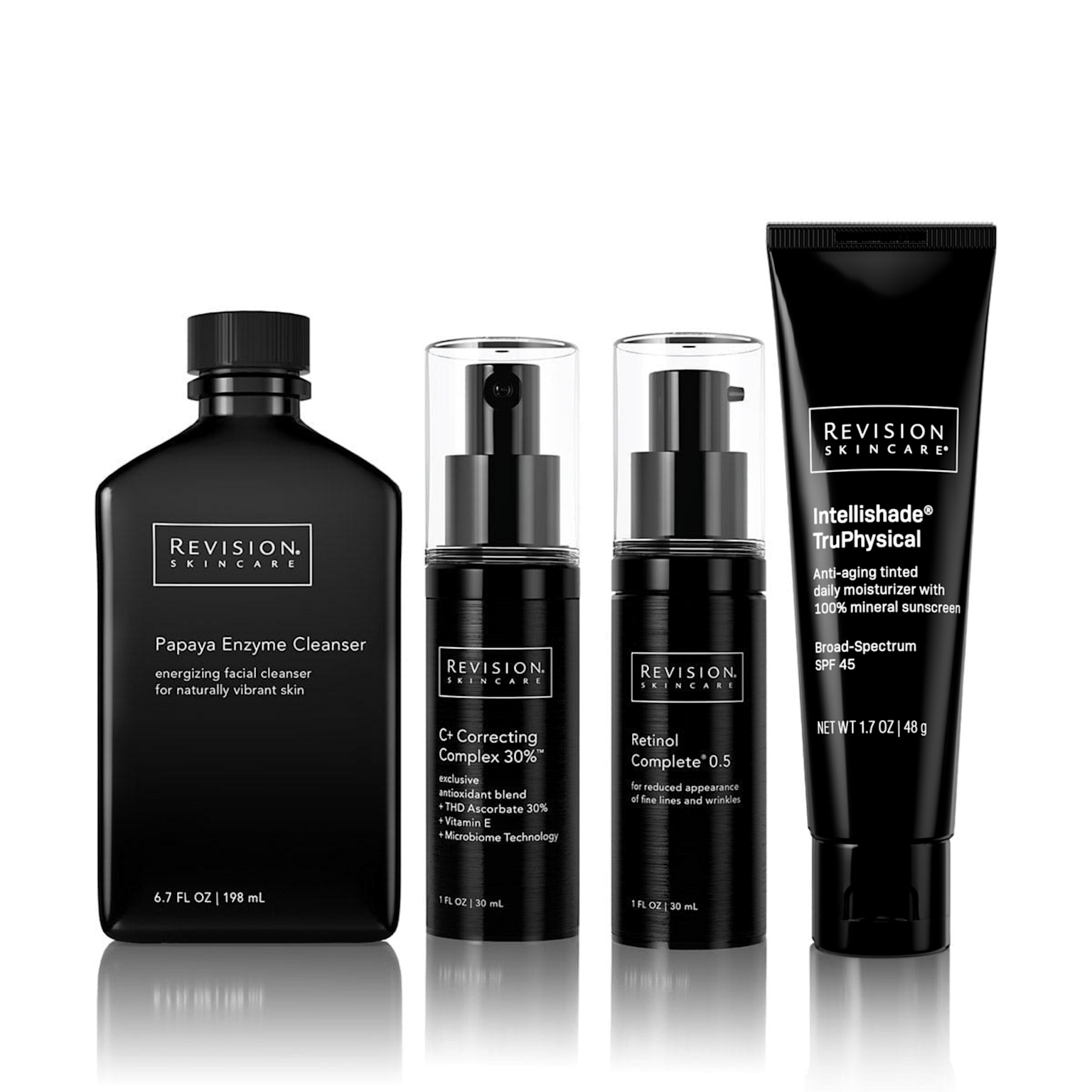
Skincare products from Revision Skincare including cleanser, serums, and a tinted moisturizer with SPF 45 sunscreen revisionskincare
These products should be applied after your regular moisturizer but before any additional makeup, allowing 2-3 minutes between moisturizer and tinted sunscreen application.
The key advantage of tinted sunscreens lies in their ability to encourage consistent daily use by combining multiple steps into one application. Many people are more likely to apply sunscreen daily when it also provides coverage and color correction benefits.
Common Application Mistakes and How to Avoid Them
The Mixing Mistake
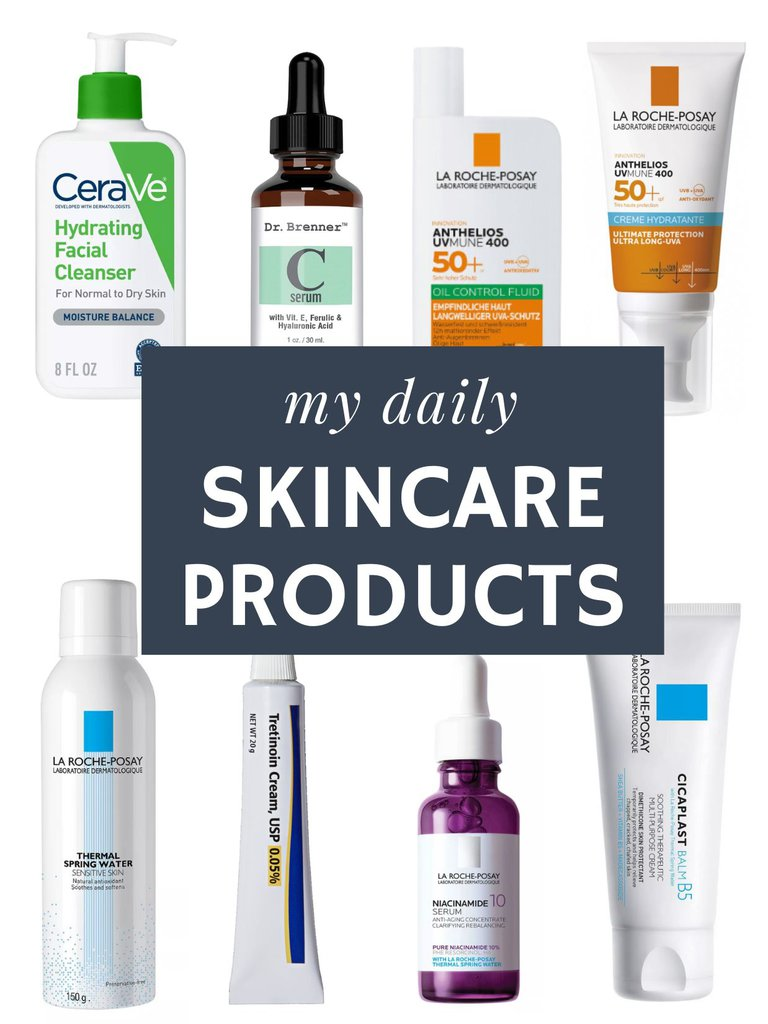
Common daily skincare products including cleanser, Vitamin C serum, moisturizers, and SPF 50+ sunscreens arranged for a typical skincare routine twotwentyone
One of the most common errors is mixing sunscreen with moisturizer in an attempt to create a custom combination product. This practice significantly dilutes the sunscreen’s effectiveness and can compromise your UV protection. Professional skincare experts strongly advise against mixing products, as it creates an untested formulation that may not provide the expected level of protection.healthline+2
Even products that seem compatible can interact negatively when combined, potentially causing pilling, reduced absorption, or compromised active ingredient stability. The safest approach is to use products as intended and apply them in their proper sequence.skincare
Application Amount Errors
Insufficient sunscreen application represents another critical mistake that dramatically reduces your UV protection. Studies show that most people apply only 25-50% of the recommended sunscreen amount, which can reduce the effective SPF by more than half.skincare+2
The “two-finger rule” provides an easy measurement guide: squeeze sunscreen along the length of your index and middle fingers from base to tip, then apply this amount evenly across your face, neck, and ears. This typically equals the recommended 1/4 teaspoon (1.25ml) for facial application.miye
Timing and Wait Period Oversights
Proper timing between product applications is crucial for optimal results, yet many people rush through their morning routines without adequate wait times. Chemical sunscreens need 2-3 minutes to begin absorbing before moisturizer application, while mineral sunscreens require 2-4 minutes after moisturizer to set properly.skincare+1
Skipping these wait periods can cause product pilling, reduced effectiveness, and uneven application. Building these brief pauses into your morning routine ensures each product can perform its intended function without interference.laroche-posay+1
Transform your skincare routine with expert guidance – explore comprehensive skincare services and professional recommendations at Smile Pharmacy to achieve optimal skin health and protection.
Sunscreen Application Timing Guide by Type
| Sunscreen Type | Application Order | How It Works | Wait Time After Application | Wait Time Between Products | Best For |
|---|---|---|---|---|---|
| Chemical Sunscreen (Avobenzone, Oxybenzone) | BEFORE moisturizer | Absorbs into skin, converts UV to heat | 15-30 minutes before sun exposure | 2-3 minutes before moisturizer | Normal to oily skin, easy blending |
| Chemical Sunscreen (Oxybenzone, Octinoxate) | BEFORE moisturizer | Absorbs into skin, converts UV to heat | 15-30 minutes before sun exposure | 2-3 minutes before moisturizer | All skin types, lightweight feel |
| Mineral/Physical Sunscreen (Zinc Oxide) | AFTER moisturizer | Forms physical barrier, reflects UV rays | Effective immediately | 2-4 minutes after moisturizer | Sensitive skin, immediate protection |
| Mineral/Physical Sunscreen (Titanium Dioxide) | AFTER moisturizer | Forms physical barrier, reflects UV rays | Effective immediately | 2-4 minutes after moisturizer | Acne-prone skin, gentle formula |
| Hybrid Sunscreen (Chemical + Mineral) | AFTER moisturizer (generally) | Combination of absorption + reflection | Effective immediately | 2-4 minutes after moisturizer | All skin types, balanced protection |
| Moisturizer with SPF (Built-in) | Replaces moisturizer step | Combines hydration + UV protection | 15-20 minutes before sun exposure | None needed (one step) | Busy routines, time-saving |
Special Considerations for Different Skin Types
Dry and Mature Skin
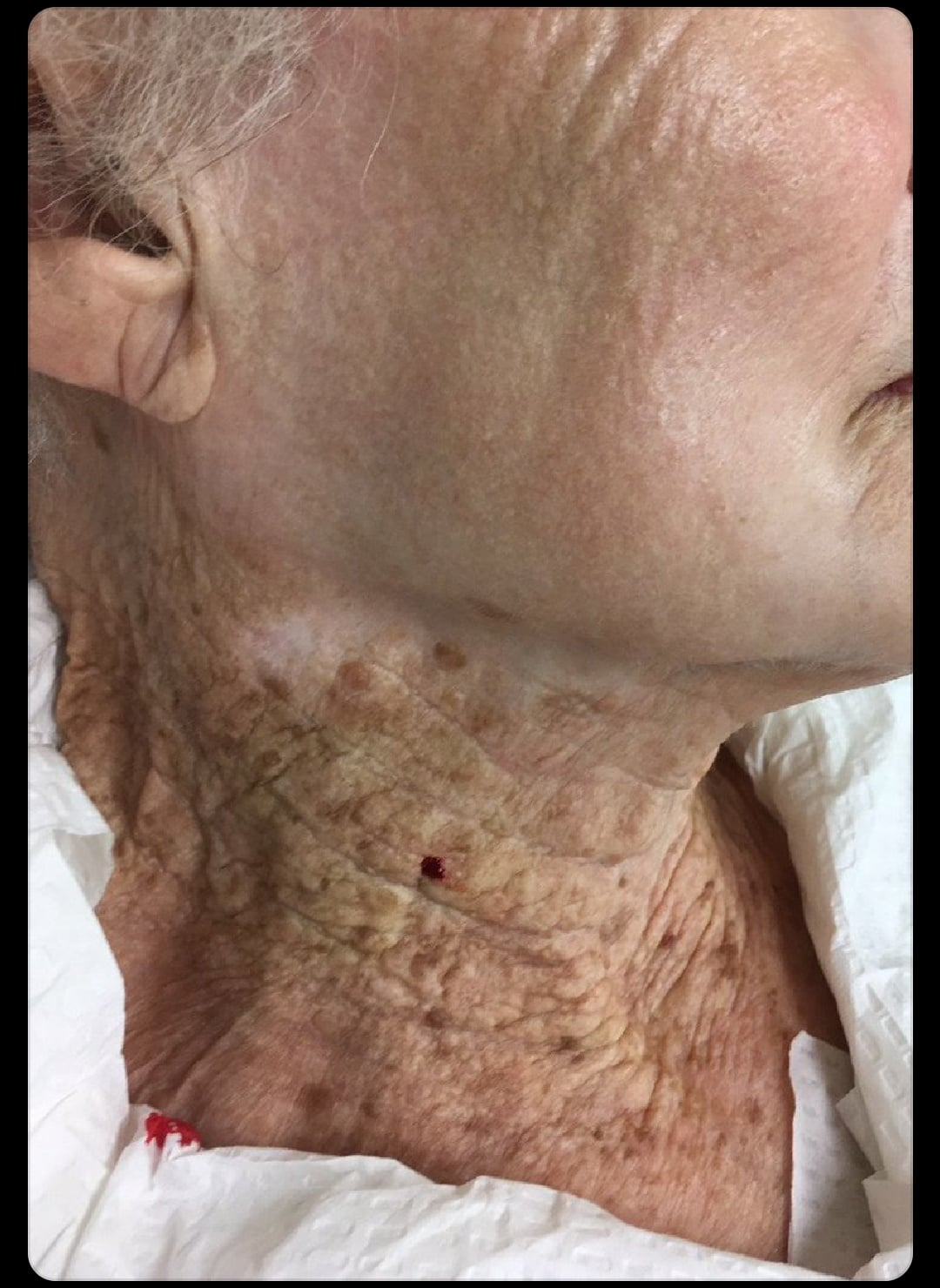
Close-up of aged skin on the neck and cheek showing sun damage, illustrating the importance of proper sunscreen application for skin protection reddit
Dry and mature skin requires extra attention to hydration and barrier repair, making the moisturizer-before-sunscreen approach generally more suitable. These skin types benefit from rich, nourishing moisturizers that can provide a smooth base for sunscreen application while addressing hydration needs.skincare+1
For dry skin, consider layering multiple hydrating products before sunscreen: a hydrating serum, followed by a nourishing moisturizer, then mineral sunscreen as the final protective step. This approach ensures adequate moisture levels while maintaining optimal sun protection.clarins+1
Mature skin particularly benefits from moisturizers containing peptides, ceramides, and hyaluronic acid before sunscreen application, as these ingredients support skin barrier function and provide anti-aging benefits that complement sun protection.miye+1
Oily and Acne-Prone Skin
Oily and acne-prone skin types may prefer lighter formulations and streamlined routines that minimize the risk of clogged pores. Chemical sunscreens often work well for oily skin as they tend to have lighter, less greasy formulations that absorb quickly without leaving residue.ipsy+3
For acne-prone skin, look for non-comedogenic sunscreens and moisturizers that won’t clog pores. Mineral sunscreens with zinc oxide can provide anti-inflammatory benefits while offering sun protection. Niacinamide-containing products can help regulate oil production and improve skin texture when incorporated into the routine.sunbum+3
Sensitive Skin
Sensitive skin requires gentle formulations and minimal irritating ingredients. Mineral sunscreens are typically the best choice for sensitive skin as they’re less likely to cause reactions compared to chemical formulations. Fragrance-free, hypoallergenic products should be prioritized throughout the routine.ipsy+1
For sensitive skin, introduce new products gradually and maintain consistent routines to minimize irritation risk. Patch testing new products is essential, and consultation with a dermatologist can help identify suitable formulations for reactive skin types.sunbum+1
Seasonal Adjustments and Environmental Factors
Summer Skincare Modifications
Summer weather requires routine adjustments to accommodate increased heat, humidity, and sun exposure. Lighter moisturizers and gel-based formulations may be preferable during hot, humid months to prevent excessive greasiness and improve comfort.cerave
Higher SPF ratings become more important during summer months and for extended outdoor activities. SPF 50 or higher is recommended for beach days, hiking, or prolonged sun exposure, with reapplication every two hours regardless of the initial application timing.dermalogica+1
Water-resistant formulations become essential for swimming, sweating, or high-humidity environments. These products maintain their protective capabilities better under challenging conditions but still require regular reapplication.cerave+1
Winter and Indoor Considerations
Winter skincare often requires richer, more nourishing formulations to combat cold, dry air and heating systems that can dehydrate skin. Even during winter months, daily sunscreen application remains essential as UV rays can still cause damage, particularly when reflected off snow or through windows.kabila+1
Indoor workers still need daily sun protection due to UVA ray penetration through windows and incidental sun exposure during commuting and brief outdoor activities. A moisturizer with SPF 30 may be sufficient for primarily indoor days with minimal direct sun exposure.dermalogica+1
Frequently Asked Questions About Sunscreen and Moisturizer Timing
Should I apply sunscreen before or after moisturizer?
The answer depends on your sunscreen type. Chemical sunscreens should be applied BEFORE moisturizer to ensure proper absorption into the skin. Mineral/physical sunscreens should be applied AFTER moisturizer as the final step in your routine. This difference in application timing reflects how each sunscreen type functions to protect your skin.ipsy+2
What is the difference between chemical and mineral sunscreen application?
Chemical sunscreens need to absorb into skin first, so they should be applied before moisturizer on clean skin. They require 15-30 minutes to become fully effective. Mineral sunscreens create a physical barrier, so they should be applied after moisturizer as your final protection layer. They work immediately upon application.ipsy+1
Can I mix sunscreen and moisturizer together?
No, mixing products can dilute the SPF effectiveness and compromise protection. Combining skincare products creates an untested formulation that may not provide reliable UV protection. Use separate products and apply them in the correct order for optimal results, or choose a dedicated moisturizer with built-in SPF.healthline+2
How long should I wait between applying moisturizer and sunscreen?
Wait 2-4 minutes for your moisturizer to fully absorb before applying mineral sunscreen. For chemical sunscreen, apply it first, wait 2-3 minutes, then apply moisturizer. These waiting periods prevent product interference and ensure each product can function properly.laroche-posay
Do I need moisturizer if my sunscreen is hydrating?
Even with hydrating sunscreen, moisturizer helps create a smooth base and ensures adequate hydration, especially for dry or mature skin types. Moisturizer also provides additional skincare benefits like barrier repair and anti-aging ingredients that sunscreen alone may not offer.skincare+1
Can I use a moisturizer with built-in SPF instead of separate products?
Yes, moisturizers with SPF 30+ can be effective for daily use, but separate sunscreen typically offers better protection for extended sun exposure or outdoor activities. The key is applying sufficient amounts (1/4 teaspoon for face and neck) and choosing broad-spectrum formulations.dermstore+1
Should I apply sunscreen on top of makeup?
For initial application, sunscreen should go under makeup, with 15-20 minutes drying time between sunscreen and makeup application. For touch-ups throughout the day, use powder sunscreen or SPF setting spray rather than liquid sunscreen over makeup.dermalogica+1
What happens if I apply products in the wrong order?
Wrong application order can reduce sunscreen effectiveness, cause pilling, product buildup, or inadequate UV protection. Always follow the thinnest-to-thickest rule, with chemical sunscreens before moisturizer and mineral sunscreens after moisturizer.skincare+1
How much sunscreen should I apply to my face?
Use about 1/4 teaspoon (1.25ml) for your face and neck. This equals roughly two finger lengths of product from your index and middle fingers. This amount ensures you receive the SPF protection stated on the product label.dermalogica+1
Can I skip moisturizer in the morning if I use sunscreen?
No, moisturizer is still important even with sunscreen. It helps maintain skin barrier function, prevents dehydration, and creates a smooth base for sunscreen application. Moisturizer and sunscreen serve different primary functions and complement each other for optimal skin health.skincare+1
Don’t let skincare confusion compromise your skin’s health – visit Smile Pharmacy today for expert skincare consultations and discover professional-grade products that ensure optimal protection and care for your unique skin needs.
The Long-Term Benefits of Proper Application
Anti-Aging and Prevention
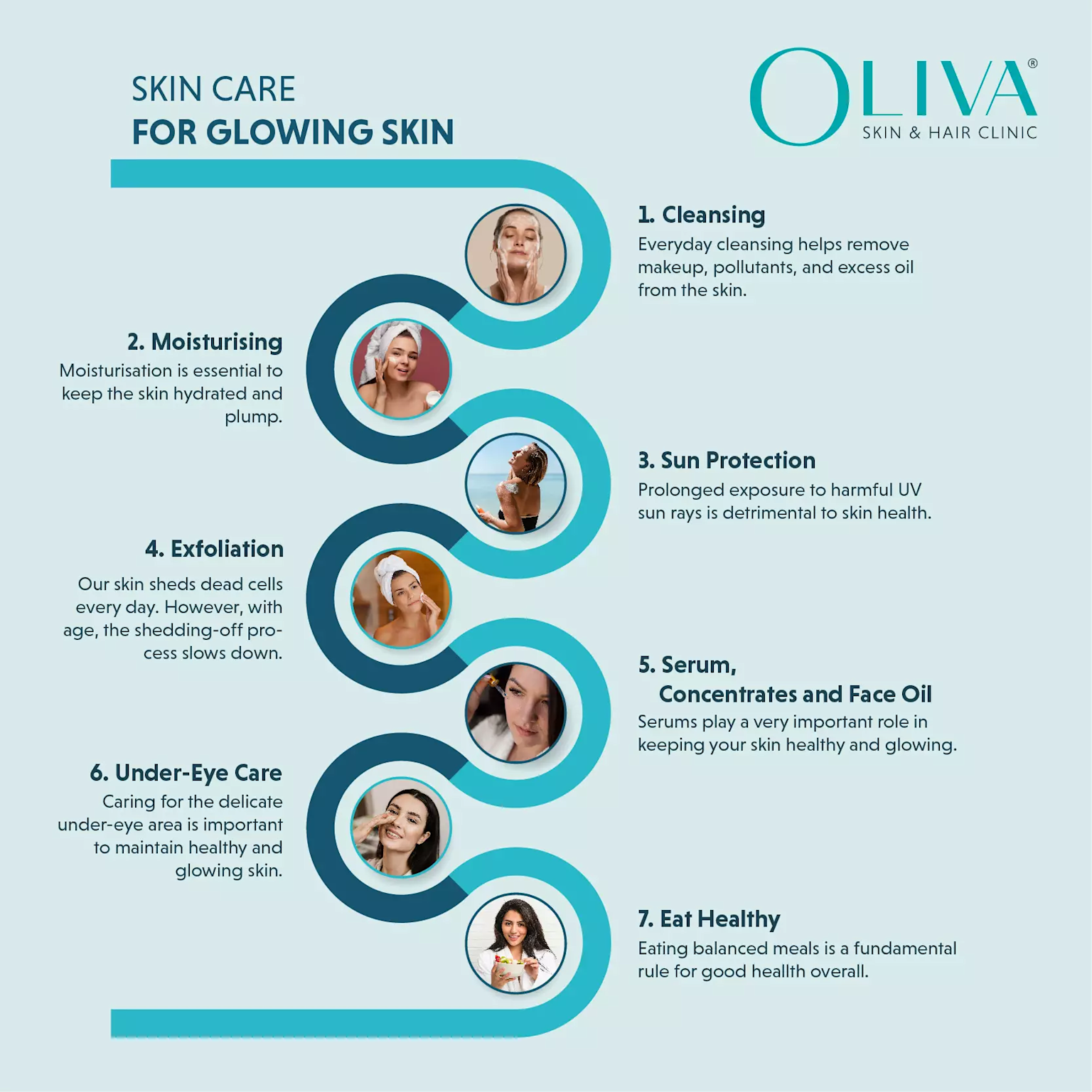
Seven essential steps in a morning skincare routine for glowing skin, including cleansing, moisturizing, and sun protection olivaclinic
Proper sunscreen application represents the most effective anti-aging intervention available, with studies showing that daily SPF use can prevent up to 80% of visible signs of skin aging. When applied correctly in the proper sequence with moisturizer, sunscreen provides comprehensive protection against photoaging, including fine lines, wrinkles, age spots, and loss of skin elasticity.sunbum+1
The cumulative effects of consistent, proper application become apparent over years and decades of use. People who maintain proper sunscreen routines throughout their lives show significantly less sun damage, more even skin tone, and better skin texture compared to those with inconsistent sun protection habits.dermalogica+1
Skin Health and Cancer Prevention
Proper sunscreen application dramatically reduces skin cancer risk, with daily use associated with up to 50% reduction in melanoma risk according to multiple studies. This protective benefit requires consistent, adequate application using the proper timing and amounts discussed in this guide.sunbum+1
The combination of moisturizer and sunscreen supports overall skin barrier function while providing UV protection, creating an optimal environment for healthy skin cell turnover and repair processes. This dual approach addresses both immediate protection needs and long-term skin health maintenance.skincare+1
Professional Recommendations and Expert Insights
Dermatologist Guidelines
Board-certified dermatologists consistently recommend the application sequence outlined in this guide, emphasizing that sunscreen type determines proper timing within skincare routines. Professional guidelines stress the importance of using adequate amounts and maintaining consistent daily application regardless of weather or season.ipsy+2
Dermatological research supports the distinction between chemical and mineral sunscreen application timing, with studies showing improved efficacy when products are applied in their optimal sequence. Professional recommendations emphasize that proper application technique is as important as product selection for achieving optimal results.sunbum+1
Skincare Industry Standards
Professional skincare brands formulate their products with specific application sequences in mind, and following manufacturer instructions ensures optimal performance. Industry testing protocols evaluate products based on proper application methods, making it essential to follow recommended usage patterns for expected results.isdin
Professional estheticians and skincare specialists receive training on proper product layering techniques, and their expertise consistently supports the guidelines presented in this comprehensive guide. Seeking professional guidance can help personalize these general recommendations for individual skin types and concerns.ipsy+1
Conclusion: Mastering Sunscreen and Moisturizer Application
The question “when to apply sunscreen before or after moisturizer” has a clear, science-based answer that depends on your specific sunscreen type and skincare goals. Chemical sunscreens should be applied BEFORE moisturizer to ensure proper absorption and activation, while mineral sunscreens should be applied AFTER moisturizer as your final protective step. This fundamental distinction reflects the different mechanisms these sunscreen types use to protect your skin from harmful UV rays.ipsy+2
Understanding proper application timing represents just one component of an effective morning skincare routine that prioritizes both skin health and UV protection. The complete sequence involves cleansing, treating with serums, applying the appropriate sunscreen-moisturizer combination, and allowing adequate time for each product to function optimally. This systematic approach ensures that each product can deliver its intended benefits without interference from other formulations.dermalogica+1
The long-term benefits of proper application extend far beyond daily UV protection, including significant anti-aging benefits, reduced skin cancer risk, and maintenance of overall skin health and appearance. Consistency in following these guidelines creates cumulative protective effects that become increasingly apparent over time, making the small daily investment in proper technique invaluable for lifelong skin health.sunbum+1
Most importantly, the best skincare routine is one that you’ll follow consistently. Whether you choose chemical sunscreens applied before moisturizer, mineral sunscreens applied after moisturizer, or combination products that streamline your routine, the key is maintaining daily application with adequate amounts and proper timing. Minor adjustments to accommodate your preferences, skin type, and lifestyle can be made while preserving the fundamental principles that ensure optimal protection and results.skincare+1
Ready to achieve perfect skincare layering and optimal sun protection? Visit Smile Pharmacy to explore professional-grade skincare products and receive expert guidance on building the ideal routine for your skin type and lifestyle. Professional skincare consultation combined with high-quality products ensures you’re maximizing both the immediate and long-term benefits of proper sunscreen and moisturizer application.
Take action today: Evaluate your current morning routine, identify your sunscreen type, and adjust your application timing accordingly. Whether switching to the chemical-sunscreen-before-moisturizer approach or confirming your mineral-sunscreen-after-moisturizer technique, implementing these evidence-based guidelines will enhance your skin’s protection and health for years to come.
For additional information on sun protection and skincare safety, consult authoritative resources like the American Academy of Dermatology to ensure you’re following the most current professional recommendations for optimal skin health and UV protection.